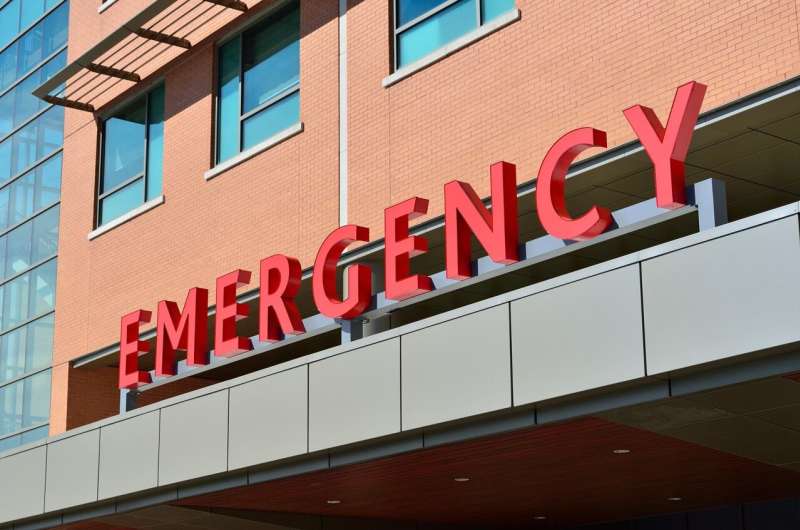This article has been reviewed according to Science X's editorial process and policies. Editors have highlighted the following attributes while ensuring the content's credibility:
fact-checked
trusted source
proofread
Helping immigrants make primary care appointments reduces ER visits and costs

Encouraging immigrants to visit primary care doctors creates a striking decline in costly emergency room use, according to a new study co-authored by an MIT economist.
The findings are from a New York City program that helped arrange medical appointments for undocumented immigrants with limited incomes, from May 2016 to June 2017. Those who received assistance in scheduling visits with primary care physicians experienced a 21% drop in emergency department use. For individuals with high-risk medical profiles who received the same help, emergency department use dropped by 42%.
Program participants were also far more likely to have screenings for high blood pressure and diabetes, tests that play a significant role in helping to reduce cardiovascular illness.
"This program is fairly low-touch and minimalist, yet it had a meaningful effect," says MIT economist Jonathan Gruber, co-author of a new paper detailing the study's results.
He adds, "It had the biggest impact on those who were the most ill. Lowering the barriers to care for these in-need individuals really pays off in terms of keeping them out of the emergency room."
The paper, "Reducing Frictions in Health Care Access: The ActionHealthNYC Experiment for Undocumented Immigrants," is published in the September issue of the journal American Economic Review: Insights.
States and local jurisdictions in the U.S. have a variety of policy approaches regarding undocumented immigrants. A New York City government task force launched in 2014 recommended finding new ways to extend health care access for such residents. To conduct this study, the researchers worked with officials from the New York City Mayor's Office and the Department of Health and Mental Hygiene to design a pilot program drawing on the city's estimated population of 1.1 million undocumented immigrants.
The experiment had more than 2,400 participants, with 1,286 in a treatment group receiving help setting up a primary care appointment. Another 1,142 participants served as a control group, and did not receive the same help. Everyone in the program had a household income no greater than twice the federal poverty line. The program reached people by partnering with community-based groups, using mailings and social media, and buying television and print media ads.
The effect of the program was rapid. In its first three months, 57% of people in the treatment group visited a primary care physician, while just 16% of people in the control group did the same. Those in the treatment group saw a savings of just over $195 in emergency-visit costs (when not admitted), which rose to over $477 for the higher-risk patients. Federal law requires emergency departments to not turn away patients.
Overall, there was a 33.8 percentage point increase in diabetes screenings and a 45.4 percentage point increase in blood pressure screenings for those in the treatment group—which, other research shows, leads to a 12% mortality reduction. The researchers used hospital data and surveys to measure these outcomes.
The program did this without extending health insurance to anyone. Most visits had a $15 co-pay; many of New York City's public health institutions scale costs to the patient's ability to pay. The aim of the program was to see what difference it would make, insurance aside, to help nudge people to see a doctor in the first place.
"I thought there was a decent chance this program wouldn't have much of an impact," Gruber says. "The fact we could find such a big effect … was surprising to me and I think it illustrates the nonfinancial barriers people are facing to get the care they need, and the role of management [in that]."
Because New York City has an extensive public health network, the researchers note in the paper, the same type of program might not be possible in some other places. And the aggregate health of participants in any such future program might be different, meaning the size of the drop in emergency care use might vary.
Separately, as the authors note in the paper, extending formal health insurance to undocumented immigrants "remains politically untenable" for the most part. On the other hand, jurisdictions might examine if other approaches increase care while, in this case, lowering emergency room traffic.
"There's this tendency with health care to think that if you give people health insurance, you're done," Gruber says. "This study is saying the right system combines insurance as financial protection with other kinds of [tools]." He adds, "There is just huge potential to use data and science to get people to where they need to be in terms of getting the most efficient care."
More information: Adrienne Sabety et al, Reducing Frictions in Health Care Access: The ActionHealthNYC Experiment for Undocumented Immigrants, American Economic Review: Insights (2023). DOI: 10.1257/aeri.20220126
This story is republished courtesy of MIT News (web.mit.edu/newsoffice/), a popular site that covers news about MIT research, innovation and teaching.





















